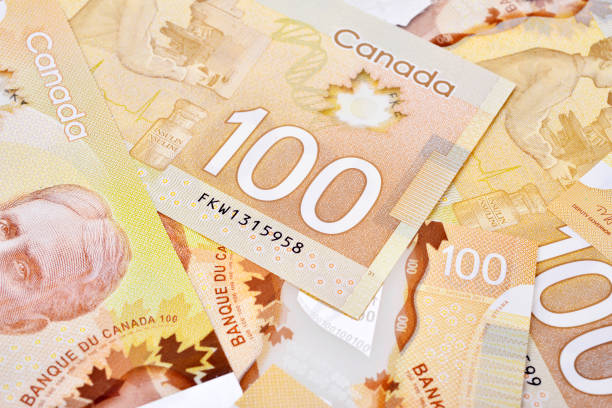USD/CAD side-steps geopolitical geopolitical volatility to trade little changed
- Markets in 2026: Will gold, Bitcoin, and the U.S. dollar make history again? — These are how leading institutions think
- US Q4 Earnings Season Set to Begin: Can US December CPI Data Bolster Rate Cut Case? [Weekly Preview]
- Gold Price Forectast: XAU/USD rises above $4,600 on US rate cut expectations, Fed uncertainty
- US Dollar Index steadies above 99.00 ahead of Retail Sales, PPI data
- WTI maintains position above $59.00 as supply risks grow
- Silver Price Forecast: XAG/USD corrects to near $86.50 as Iran stops killing protesters

USD/CAD avoids the worst excesses of volatility in markets from the reported retaliation of Israel against Iran.
The flight to safety boosted the US Dollar but the Canadian Dollar benefited equally from surging Oil prices.
Interest rate differentials remain a bullish factor for the pair as the Fed delays expected interest rate cuts.
USD/CAD is trading in the 1.3750s after edging lower on Friday. The pair has been shielded by the worst excesses of volatility witnessed in markets brought on by the escalating geopolitical situation in the Middle East.
The surge in risk aversion after reports of Israel’s retaliatory attacks on Iran have supported the safe-haven US Dollar (USD) along with the other usual suspects: Gold, JPY, CHF.
Yet the impact on USD/CAD was muted due to the Middle East conflict’s impact on Oil, and the Canadian Dollar’s sensitivity to Oil prices.
WTI Crude Oil prices rose over 4.0% from $81.80 to $85.50 following the news of Israel’s purported attack on Iran. This strengthened CAD because Oil is the country’s primary export.
Beyond the Israeli-Iran conflict, however, other factors are also expected to drive up the price of Oil, according to some analysts.
One factor is the US’s increasingly long list of Oil producing countries who are potential targets for sanctions.
“Less Oil from Iran and Venezuela is likely to reach the market in the coming months, as the US intends to tighten Oil sanctions against Iran and reinstate the Oil sanctions against Venezuela that have been eased in the meantime,” says Commerzbank in a recent note.
Commerzbank sees other bullish factors for Crude in the form of continued OPEC+ supply constraints and increased broad demand for gasoline due to the likelihood that the European Central Bank (ECB) and Federal Reserve (Fed) will start cutting interest rates before the end of the year.
From the perspective of Oil, the outlook favors the CAD side of the USD/CAD pair, and is therefore a bearish factor for USD/CAD.
Diverging outlook on interest rates could support USD/CAD
USD/CAD remains in a short and medium-term uptrend despite the negative spillover effect from Oil prices.
The reason for this is the diverging outlook on the future path of interest rates in the US and Canada. Interest rates are a key FX driver because global capital tends to flow to where interest rates are higher all other things being equal.
This has supported the US Dollar most recently during its early April rally and provided a bullish backwind for USD/CAD.
Interest rates in Canada are expected to fall in the summer amid declining inflation and slower growth but the reverse is increasingly the case in the US.
In the US stronger macroeconomic data, persistently high inflation and a tight labor market are seen as factors likely to keep interest rates comparatively higher for longer.
From expecting three 0.25% rate cuts in 2024 at the start of the year when inflation was tracking lower, the Federal Reserve is now indicating it may only cut twice or perhaps once. Some Federal Reserve officials are even signaling that the central bank should keep interest rates at their present level until more evidence of inflation coming down is available.
Market based indicators of the number of rate cuts have also changed radically with odds now showing the most likely month for the Fed to implement a first rate cut is September, when previously expectations had been zeroed in on June.
The situation in Canada is very different. There, inflation is still tracking lower and the probability of the Bank of Canada (BoC) cutting interest rates by 0.25% in June stands at 70%, according to analysts at Brown Brothers Harriman.
Indeed, on Tuesday, BoC governor Tiff Macklem stated, “there’s some downward momentum in underlying inflation.”
Canadian Consumer Price Index (CPI) data backs this up. Whilst headline inflation crept higher in March – to 2.9% from 2.8% it remains below the BoC's 3.0% target. In addition, the main drivers were rising gasoline prices and the rising US mortgage rates used by many Canadian property owners, according to Tradingeconomics.com.
Both the core-trim and core-median measures of the Consumer Price Index (CPI), however, showed signs of easing – to 3.1% (the lowest since June 2021) and 2.8% (matching the July 2021 low), respectively – according to BBH.
Read more
* The content presented above, whether from a third party or not, is considered as general advice only. This article should not be construed as containing investment advice, investment recommendations, an offer of or solicitation for any transactions in financial instruments.




